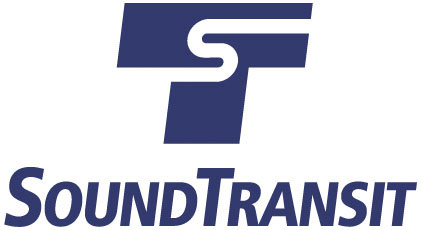Where should regional high-capacity transit services go next following the completion of currently funded projects in 2023? Community members can help shape the regional transit system’s future by participating in Sound Transit’s Long-Range Plan update.
By 2035 approximately 30 percent more people are expected to live within the Puget Sound region than in 2010. In the coming months, the Sound Transit Board will explore long-term options for expanding train and express bus services in response to rising demand and road congestion.
“In the next decade, Sound Transit will deliver more than 30 miles of light rail extensions, increase south line commuter rail service and continue operating popular express bus routes. Updating the Long-Range Plan will define the options for where regional transit can go beyond the projects and services voters have approved,” said Sound Transit Board Chair and Pierce County Executive Pat McCarthy.
Voters in Central Puget Sound approved the formation of Sound Transit to develop a high-capacity transportation system for the region, which is home to about 40 percent of the state’s residents. The Long-Range Plan, last updated in 2005, is the vision for how the system should grow over many decades. Preparing a supplemental environmental impact statement (SEIS) to update the plan provides an opportunity to consider questions including which corridors should be identified or reconfirmed as priorities for potential future light rail extensions; which corridors should be designated for potential high-capacity transit/bus rapid transit; whether the region should make more investments in commuter rail; and where the system should provide improved parking facilities and access for pedestrians and bicyclists.
The first step in the SEIS process, called scoping, gives the public, local jurisdictions and government agencies a chance to provide input on what potential changes to the current Long-Range Plan should be studied. Comments will also help Sound Transit identify and consider potential alternatives and their effects on the environment.
Sound Transit is seeking comments through November 25 in person at one of the public meetings listed below; online at soundtransit.org/LongRangePlan; via e-mail at LongRangePlan@soundtransit.org; and via mail at Sound Transit, Attn: James Irish, 401 S. Jackson St., Seattle, WA 98104.
All public meetings except Nov. 21 run from 5:30 p.m. to 8 p.m. with a presentation at 6:15 p.m. The schedule is as follows:
- Seattle: Tues., Nov. 12, 5:30-8 p.m. Seattle University Campion Ballroom, 914 E. Jefferson St.
- Federal Way: Weds., Nov. 13, 5:30-8 p.m. Federal Way Community Center, 876 S. 333rd St.
- Redmond: Thurs., Nov. 14, 5:30-8 p.m. Redmond Marriott, 7401 164th Ave. N.E.
- Tacoma: Mon., Nov. 18, 5:30-8 p.m. Tacoma Convention Center, 1500 Broadway
- Everett: Tues., Nov. 19, 5:30-8 p.m. Eisenhower Middle School, 10200 25th Ave. S.E.
- Seattle daytime event: Thurs., Nov. 21, 11:30 a.m.-1:30 p.m. Union Station, 401 S. Jackson St.
The current Long-Range Plan for high-capacity transit is part of Transportation 2040, an action plan for transportation in the central Puget Sound region for the next 30 years. By the year 2040, the Puget Sound Regional Council estimates the region is expected to grow by roughly 1.5 million people and support more than 1.2 million new jobs. All of these new people and new jobs are expected to boost demand for travel by about 40 percent.
According to Sound Transit, in some of the region’s most congested areas, transit is the most realistic option for significantly increasing the transportation system’s capacity to move people and freight. It also helps move thousands of people who would otherwise drive. Congestion-free commuting options also protect the environment and improve the regional economy, according to Sound Transit.
Sound Transit is on schedule to complete a 50-mile regional light rail system by 2023. In 2016, service will open north to Capitol Hill and the University of Washington, and south to South 200th Street in SeaTac. In 2021, service opens between the University of Washington and Northgate. In 2023, service opens east to Mercer Island, Bellevue and Redmond’s Overlake area; north to Lynnwood; and south to Kent/Des Moines.
These funded expansions and rising demand are forecasted to increase Sound Transit’s weekday ridership from 100,000 today to approximately 350,000 in 2030.
The Sound Transit Board will decide whether and when to initiate a ballot measure for further expansions. The majority of existing taxes are committed through the 2030s for operating current services and building the extensions that are now underway. Any significant new expansion before the 2030s will require new revenue sources. Updating the Long-Range Plan will help set the stage to explore future funding options.
More information is available online at soundtransit.org.







